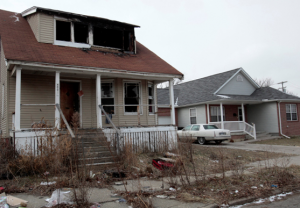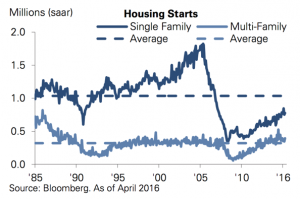 Business Insider – The real-estate market is one of the most important parts of the American economy.
Business Insider – The real-estate market is one of the most important parts of the American economy.
And there’s a lot of disagreement about where it’s going next.
Housing is one of the largest sources of wealth for Americans, it drives other parts of the economy such as consumer spending, and the credit given out for mortgages keeps many financial institutions profitable.
Given the housing market’s importance, economists and analysts spend quite a bit of time trying to figure out where the market is and what will happen next. As it stands, however, there appears to be no consensus on the matter.
On the one hand, some economists think the market is only just now entering its full-throated recovery from the housing crisis. In its latest “Macro Insights,” the Goldman Sachs Asset Management team said the housing market was still early in its cycle.
“We think the US real-estate market remains firmly in the expansionary phase of the cycle, with the commercial property market running somewhat ahead of the residential market,” the note from GSAM said.
The GSAM note points to the low vacancy rate in commercial real estate, the early-in-the-cycle-looking number of single-family housing starts, and the still relatively loose lending standards for banks as indicators that real estate still has room to run.

Others, however, are not as encouraged. For instance, in its second-quarter earnings, PulteGroup, one of the largest homebuilders in the US, said it was planning for a slowdown in the future because “homebuilding is a cyclical business.”
“After four years during which our investment in new land grew significantly, we plan to slow the rate of growth in our new investment in 2017 and beyond,” CEO Richard Dugas said during the company’s second-quarter earnings conference call.
Scaling back investment in new property, which in turn takes a few years to develop, would indicate that the company believes that the housing cycle is headed toward completion rather than just beginning.
But on the commercial-real-estate side, the Office of the Comptroller of the Currency released a report that seemed to indicate that the sector was looking bubbly, which usually ends with a pop.
“While leveraged lending and auto lending remain concerns, CRE lending and concentration risk management has become an area of emphasis for regulators,” Thomas Curry, the head of the OCC, said in remarks accompanying the report.
Both of these statements suggest a mid- to late part of the housing cycle and certainly would indicate a shorter time frame for the housing recovery’s end.
So, who’s right?
There are arguments to be made on both sides. You could be a believer in the housing market: Intention to buy a home is at record highs, and wages are increasing and the labor market is strong, allowing people to afford homes.
Or you could take the other side and say that undersupply has already pushed prices so high that young people trying to buy their first homes won’t be able to. Recent reports on the ease of credit show that lenders at least intend to tighten their standards. Further, the Federal Reserve is (slowly) embarking on raising rates, which will make it harder to borrow for a house.
And while saying that both sides have a point may not be the most satisfying way to resolve the question, there simply isn’t a definitive answer. It all depends on how you weight the various economic factors.
And for now we all have to watch the frequent housing data — permits, starts, the home price index, and the like — and see what they tell us about the real-estate market.